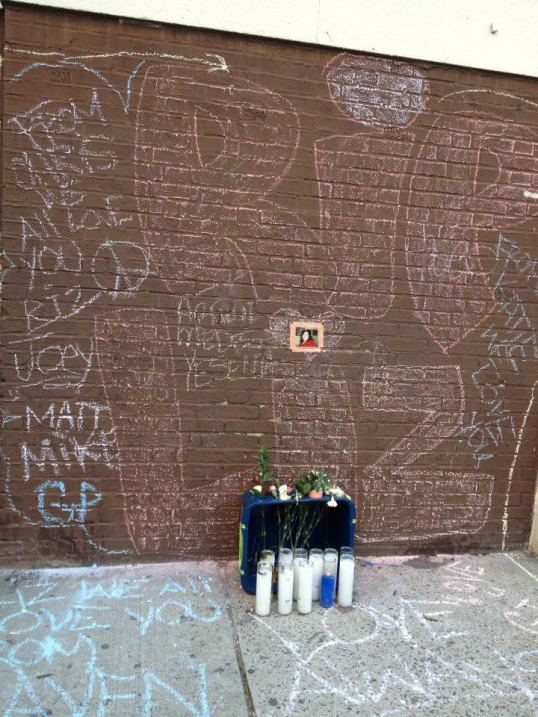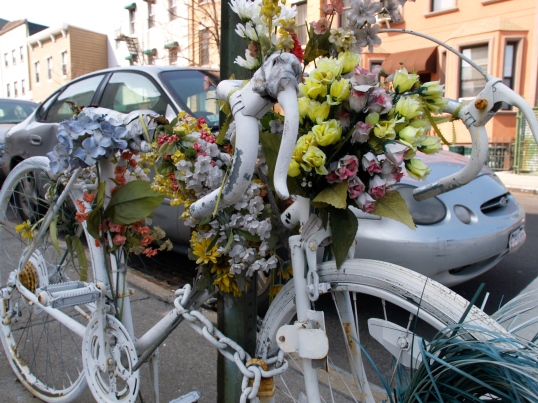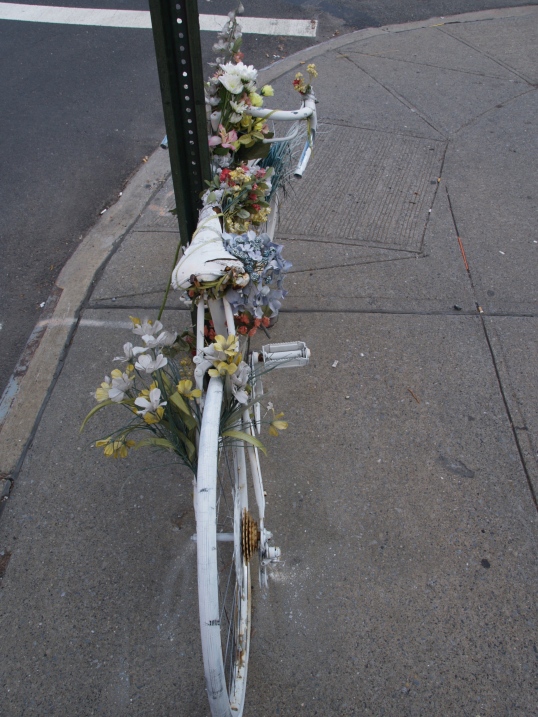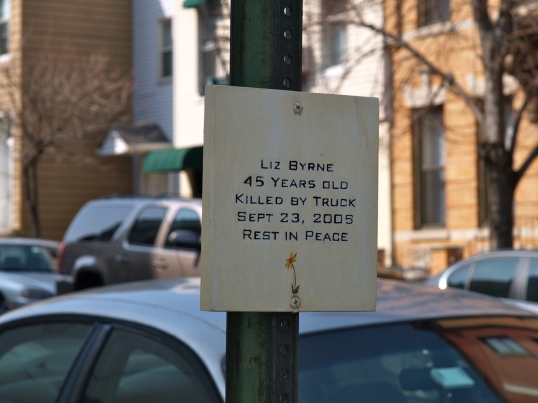Washed away by the rain – street chalking and ephemeral memorials, Part 1
A colleague of mine from Columbia University’s Narrative Medicine program, Gillian Graham, sent me the following photos earlier this year:
–and a close-up of the chalking–
She also sent this explanation:
“So this popped up on the corner of 173rd/Haven Ave in NYC last week. I saw it in progress; I saw a woman find out for the first time that this woman had died through this shrine (she grew up with her), and then the next day it was washed out by a rainstorm.”
This New York City shrine is the perfect example of an ephemeral memorial. I sometimes use the terms makeshift memorial/ephemeral memorial/spontaneous shrine/roadside memorial interchangeably, but in this case, I believe ephemeral memorial is the most appropriate due to the absolute ephemerality of the shrine. Chalk, by nature, does not last on pavement for very long. I grew up in the hot and dry suburbs, so as a child, a chalked hopscotch pattern could last for quite a long time (maybe two weeks). In a place like New York City where there is extreme foot traffic and frequent heavy thunderstorms, anything that is chalked will probably not last more than about one or two days– if even that long.
A shrine like this makes me think of burning offerings for the dead. You burn them and send them off away from the living to the dead. A shrine that is made with the understanding that it will soon be gone is delicate yet powerful. It has intense meaning for the fleeting moments that it exists and then it is washed away. Like the person to whom it is dedicated, the shrine becomes a memory.
Tomorrow I’ll post about the Triangle Shirtwaist Factory Fire memorial project CHALK…stay tuned…






















